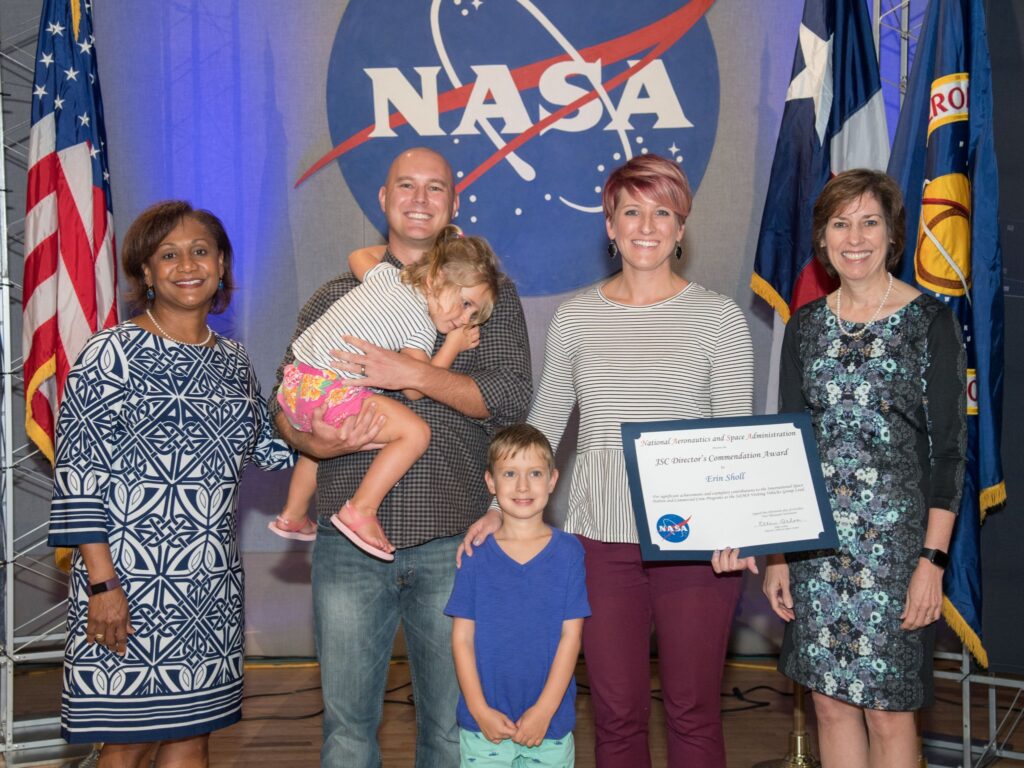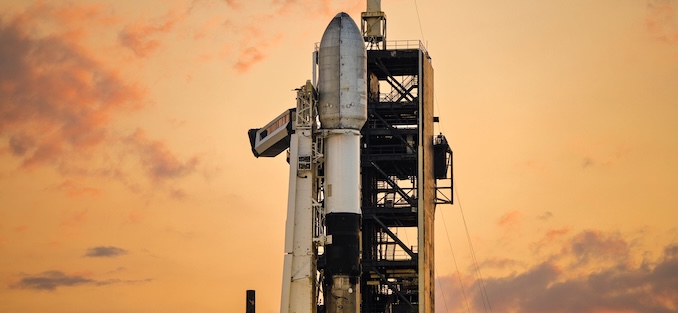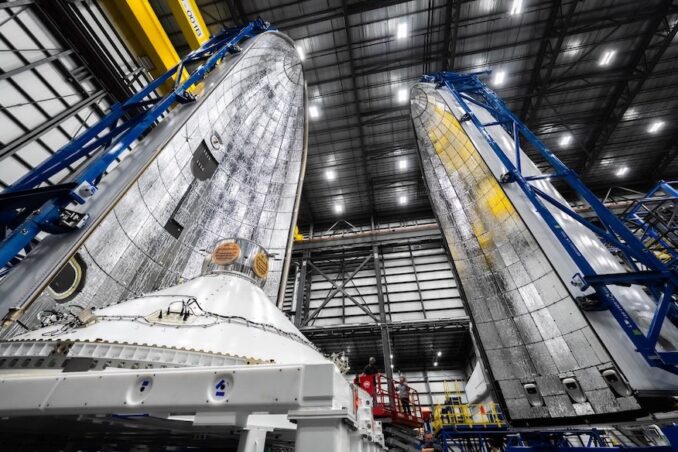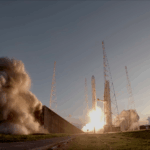Now Reading: SpaceX Achieves Major Milestones in Starship Test Flights and Infrastructure Expansion
-
01
SpaceX Achieves Major Milestones in Starship Test Flights and Infrastructure Expansion
SpaceX Achieves Major Milestones in Starship Test Flights and Infrastructure Expansion
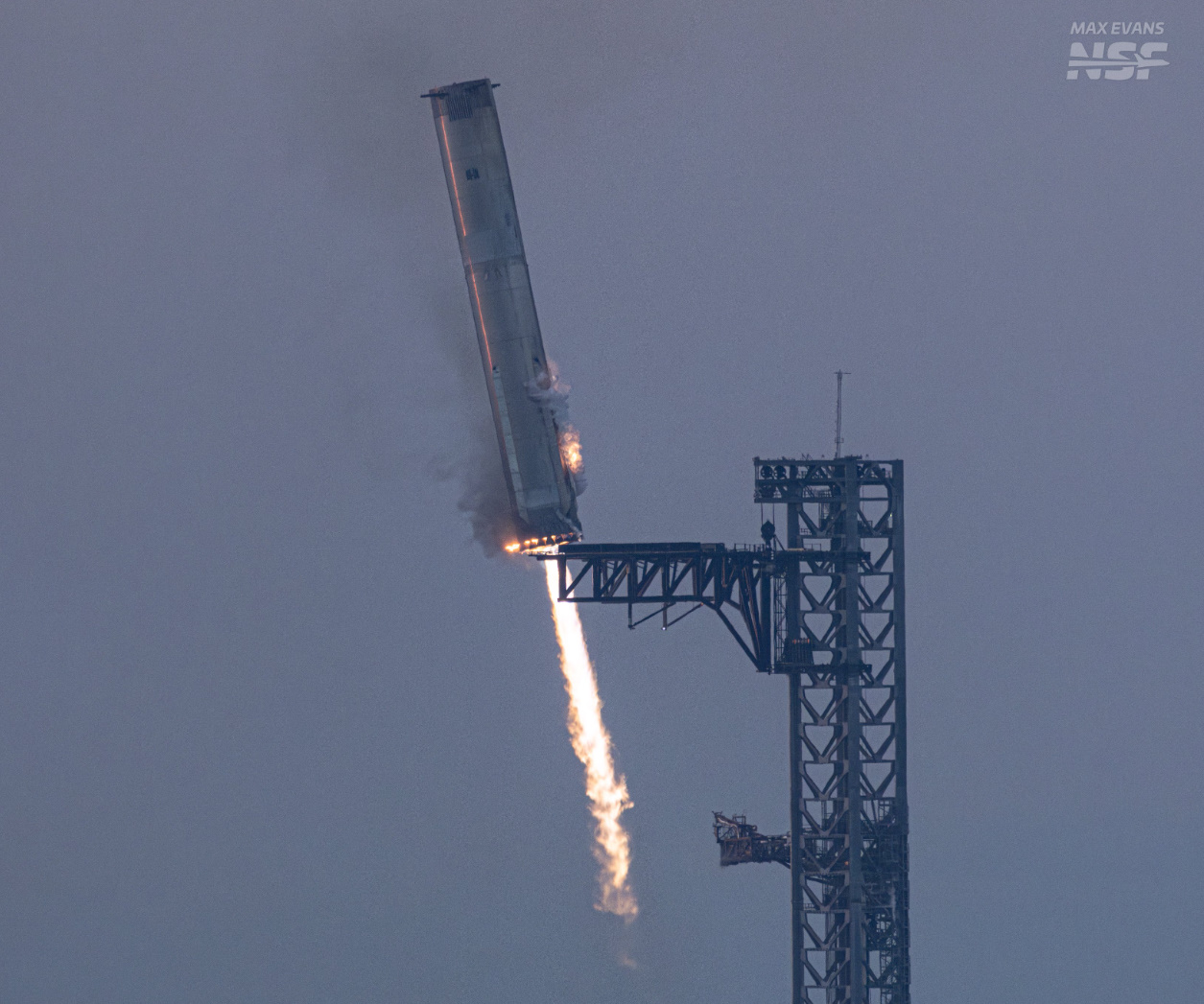

This past year has been a remarkable chapter for SpaceX, marked by a series of ambitious flight tests that pushed the boundaries of aerospace innovation. The company’s relentless pursuit of excellence culminated in four major test flights of the Starship stack, each iteration designed to enhance upon its predecessors, showcasing advancements in technology, engineering, and operational prowess.
Beginning with Flight 3 on March 14, the mission involved Ship 28 paired with Booster 10. This flight was particularly noteworthy as it featured a propellant transfer demonstration, an important step for future deep-space missions that may rely heavily on in-space refueling. Despite a promising ascent without any engine failures, the mission ended with a loss of Booster 10 just above the Gulf of Mexico, following its boost-back maneuver. Ship 28 encountered roll control issues, leading to an unexpected re-entry burn-up in the atmosphere, providing invaluable data on how not to perform a coast phase. It served as a potent reminder that even in failure, science proceeds through the lessons learned.
Next, Flight 4 on June 6 saw Ship 29 and Booster 11.1 take to the skies. While the booster experienced an engine out situation, it still managed a soft splashdown, albeit with a dramatic explosion shortly thereafter. This flight was historic for Ship 29 as it achieved the first controlled reentry of a Starship, demonstrating the effectiveness of its flight control systems. Even though it was a near miss with the landing target due to flap malfunction, it illuminated the path forward for refining spacecraft reentry dynamics.
October heralded Flight 5, a pivotal moment as SpaceX aimed to catch a booster mid-air for the first time. Ship 30 and Booster 12 flew a flawless ascent, with the booster eventually caught by the chopsticks—SpaceX’s unique retrieval system—after completing its landing burn. This flight marked a landmark achievement in the methodology of booster recovery and was a public validation of SpaceX’s ambitions for reusability, which can reduce mission costs and enhance the sustainability of space travel. Meanwhile, Ship 30, equipped with an upgraded Block 2 heat shield, completed a successful controlled reentry and landed precisely in the Indian Ocean.
Finally, Flight 6 on November 19 involved Ship 31 and Booster 13. Following a successful ascent, Booster 13, faced with a potential issue at the tower, forsook the catch maneuver and instead splashed down in the Gulf. Ship 31, despite having a partially stripped heat shield, performed a successful reentry and landed on target, continuing the trend of learning from each successive flight. This series of flights has amassed a wealth of data and insights, fueling the iterative design and engineering processes crucial to the advancement of the Starship Program.
The evolution of the Starship design is now crystallizing into what is known as Block 2. This next generation boasts significant upgrades such as extended fuel tanks, redesigned flaps positioned for better aerodynamic control, enhanced structural integrity, and a fundamentally upgraded heat shield that can withstand the rigors of reentry much better than its predecessors. Each of these enhancements comes from a rigorous examination of data from previous flights and represents SpaceX’s commitment to learning and adapting. The stage is set, and all eyes are on Flight 7 to see how these advancements manifest in the skies.
With four ambitious flights, the Starship program not only demonstrated its dedication to pushing the envelope of what is possible but also laid the groundwork for future achievements that may one day allow humanity to traverse the stars. The relentless cycle of testing, learning, and innovation continues to define SpaceX’s mission, ensuring that the lessons of today will be the triumphs of tomorrow.
As SpaceX embarks on the next chapter of the Starship program, infrastructure enhancements are poised to play a pivotal role in shaping the future of space exploration. The groundwork laid this past year is not merely an expansion of physical structures; it is a carefully orchestrated plan designed to accelerate production, streamline operations, and ultimately, enhance the mission capabilities of the Starship fleet.
At the heart of these advancements is the recently completed Starfactory, a sprawling facility that boasts over one million square feet dedicated to the manufacture of Starship components. This innovative space brings engineers, production staff, and management under one roof, fostering a collaborative environment where ideas can flow freely, and challenges can be addressed promptly. Imagine an assembly line not just for rockets but for the dreams of interstellar travel, a place where every bolt and panel comes together to forge the future.
Completed along with the Starfactory is the state-of-the-art Mega Bay 2, a substantial upgrade that far surpasses its predecessor, High Bay. This facility features three dedicated work stands, equipped with full access platforms that allow workers to engage with the ship at every level, eliminating the need for cumbersome scaffolding. In an effort to mitigate the risk of Foreign Object Debris (FOD), clean room cubicles have been strategically placed throughout the facility, reinforcing SpaceX’s commitment to precision and safety in spacecraft construction. The emphasis on cleanliness and accessibility in Mega Bay 2 underlines a critical understanding in aerospace manufacturing—every detail matters when designing for the final frontier.
Moreover, another facility is set to rise at Roberts Road, which promises to expand production capabilities even further. This upcoming Starfactory will potentially dwarf the current facility at Starbase and may feature integrated high bays, ensuring that no structural components are exposed to the elements until they are fully assembled. This initiative reflects SpaceX’s forward-thinking approach; they recognize that as demand for launches increases, so too must their capability to produce vehicles efficiently and effectively.
The improvements don’t stop at production sites. The launch site has undergone a transformation as well. The original Orbital Launch Pad A has seen enhancements with the introduction of twelve horizontal Liquid Oxygen and Liquid Nitrogen tanks. This switch to horizontal tanks not only preserves the existing capacity but also ensures that the tanks are shielded from the exhaust plumes during launch—an environmental and safety improvement that could yield valuable data for future operations.
Looking ahead, the construction of Orbital Launch Pad B is underway, designed from the lessons learned through previous tests. The new pad will feature a bidirectional flame trench optimized for efficient rocket launches. The potential resides in its design, which allows for faster turnaround times between missions, a necessity for increasing launch frequency. This facility is anticipated to be connected to an existing tank farm, thus ensuring fluid operations without the need for additional infrastructure.
Further expanding its footprint in Florida, SpaceX is making strides in obtaining the necessary approvals from the Federal Aviation Administration (FAA) for multiple launch pads. An updated Environmental Impact Statement (EIS) for LC-39A is in progress, alongside plans for SLC-37, allowing for potentially two new pads to complement the existing operations at the Cape. These enhancements aim not only to meet SpaceX’s growing launch cadence but also to solidify its role as a leader in spaceflight technology.
As infrastructure evolves, so too does the spirit of innovation at SpaceX. Each brick laid, each tank installed, and each building constructed is a step towards a future where interplanetary travel is not just a dream but a realization. In this race to the stars, SpaceX stands prepared to harness engineering prowess and technological advancements to propel humanity beyond the confines of Earth.
Stay Informed With the Latest & Most Important News
Previous Post
Next Post
-
 012024 in Review: Highlights from NASA in Silicon Valley
012024 in Review: Highlights from NASA in Silicon Valley -
 02Panasonic Leica Summilux DG 15mm f/1.7 ASPH review
02Panasonic Leica Summilux DG 15mm f/1.7 ASPH review -
 03From Polymerization-Enabled Folding and Assembly to Chemical Evolution: Key Processes for Emergence of Functional Polymers in the Origin of Life
03From Polymerization-Enabled Folding and Assembly to Chemical Evolution: Key Processes for Emergence of Functional Polymers in the Origin of Life -
 04How New NASA, India Earth Satellite NISAR Will See Earth
04How New NASA, India Earth Satellite NISAR Will See Earth -
 05And Thus Begins A New Year For Life On Earth
05And Thus Begins A New Year For Life On Earth -
 06Astronomy Activation Ambassadors: A New Era
06Astronomy Activation Ambassadors: A New Era -
07SpaceX launch surge helps set new global launch record in 2024












